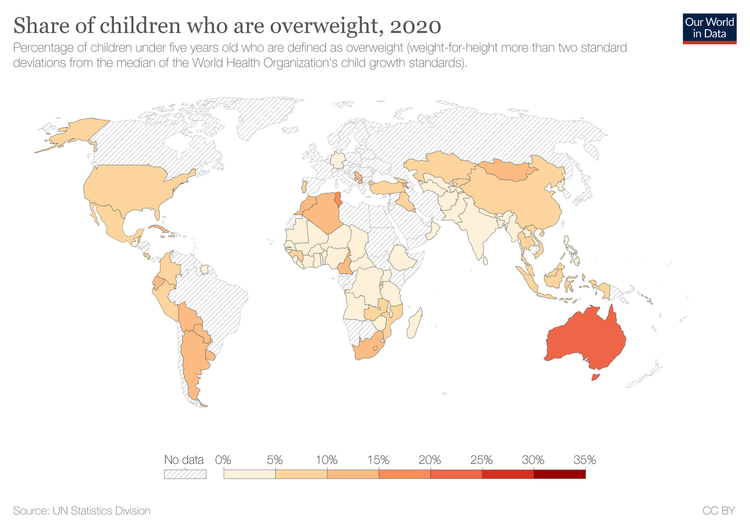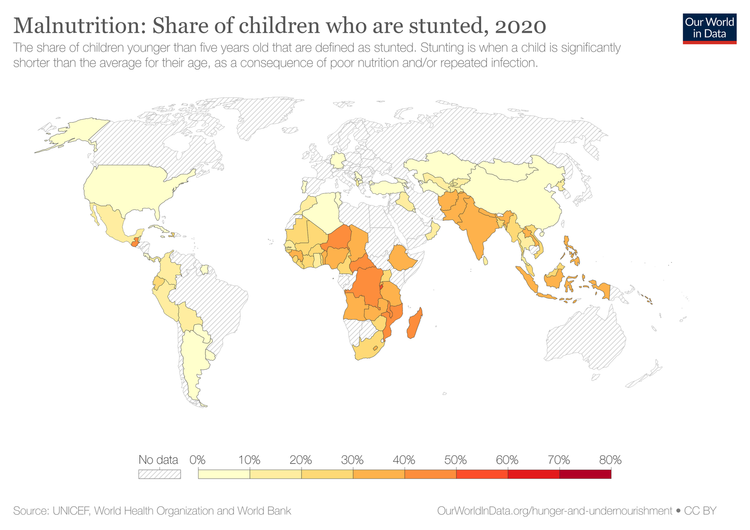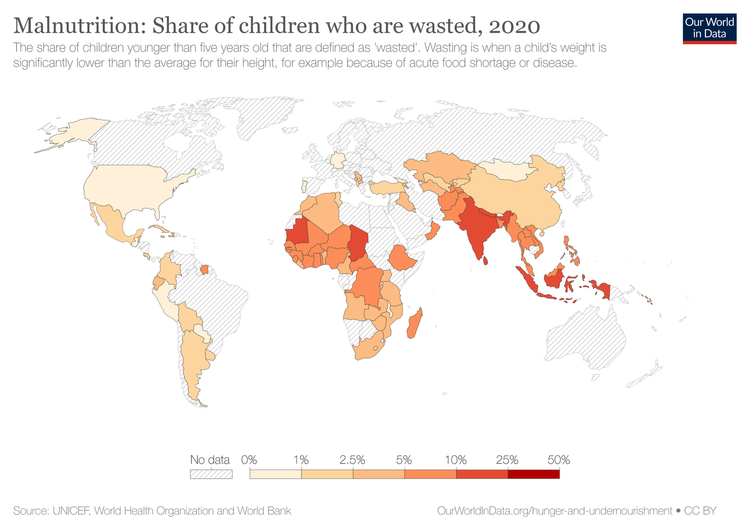Sustainable Development Goal #2 is to end hunger, achieve food security and improved nutrition and promote sustainable agriculture.
Within SDG #2 are eight targets, of which this episode will focus on Target 2.2:
By 2030, end all forms of malnutrition, including achieving, by 2025, the internationally agreed targets on stunting and wasting in children under 5 years of age, and address the nutritional needs of adolescent girls, pregnant and lactating women and older persons.
Within target 2.2 are three indicators:
Indicator 2.2.1: Prevalence of stunting (height for age <-2 standard deviation from the median of the World Health Organization (WHO) Child Growth Standards) among children under 5 years of age.
Indicator 2.2.2: Prevalence of malnutrition (weight for height >+2 or <-2 standard deviation from the median of the WHO Child Growth Standards) among children under 5 years of age, by type (wasting and overweight).
Indicator 2.2.3: Prevalence of anaemia in women aged 15 to 49 years, by pregnancy status (percentage).
We looked at the definition of malnutrition in the previous target. Stunting is the prevention of the development of height in a child due to malnutrition, often caused by diarrhea or infection by parasitic worms from living in conditions characterised by unsanitary drinking water, open defecation in the absence of toilets and sewage systems.
Wasting means the progressive loss of muscle and fat tissues.
The nutritional necessities of adolescent girls, pregnant and lactating women are addressed in this target, whereby upon ingestion of food to the digestion system of our organs, not all vitamins and minerals are successfully absorbed into our blood.
Indicator 2.2.1 is the first mention so far of the World Health Organisation, which the world’s come to know more familiarly with the COVID-19 pandemic. The unit of measurement for this indicator is for each year of age below 5, a ratio of height to weight assessing if stunting has occurred, with the global aim of zero stunting.
Whereas Indicator 2.2.1 measured stunting by 2 standard deviations from the median of the WHO Child Growth Standards for height, Indicator 2.2.2 measures 2 standard deviations from weight - both underweight, in the form of wasting, and overweight, in the form of childhood obesity. Again, the objective for this indicator is zero prevalence by 2030.
Of note is within the UN process of selection, a target or indicator for the prevalence of adult obesity was omitted, meaning a body mass index greater than or equal to 3.0.
Indicator 2.2.3 focuses on anemia, a treatable condition whereby lab testing reveals an individual's blood is below a certain value of hemoglobin, often due to iron deficiency, disallowing the normal functioning of blood, the brain and muscles, and often compounded by deficiencies of other nutrients.
For the purposes of this indicator, the measure is the portion of women aged 15-49 years old with a concentration of hemoglobin below 110 grams per litre for pregnant women, and 120 grams per litre for the remainder, including lactating women.
This hinders one’s ability to productively work, thus to earn income, as well as academic performance for children, which has flow-on effects into adulthood. Research demonstrates the efficacy of treating anemia with iron supplements to remedy the effects on childhood development.
Furthermore, alongside children, women of reproductive age disproportionately experience anemia, largely from menstruation. Thus, women ought to be targeted for anemia treatment for the benefit of furthering gender equality via academic performance and workplace productivity
In regard to anemia’s role in maternal and newborn health, the condition carries with it a greater risk of death for the mother, as well as the child either before or after the birth.
With the target of elimination of stunting and wasting, 149.2 million children under 5, or 22 percent of all children, suffer from stunting (low height for age), down a quarter from 2015.
7 per cent, or 45.4 million children under 5 suffered from wasting, and a similar amount were overweight. It’s anticipated perhaps 15 percent more children will experience wasting due to the current pandemic.
As of 2019, 30 percent of non-pregnant women of reproductive age suffered from anemia, with pregnant women reporting 7 percentage points higher, with the highest portion seen in South Asia and Central Asia, at close to half of all reproductive age women.



